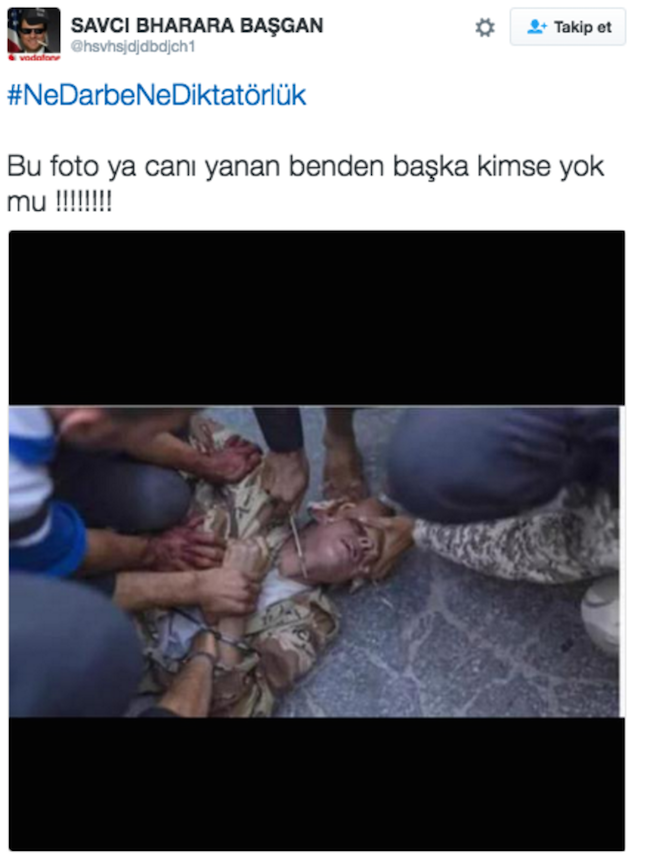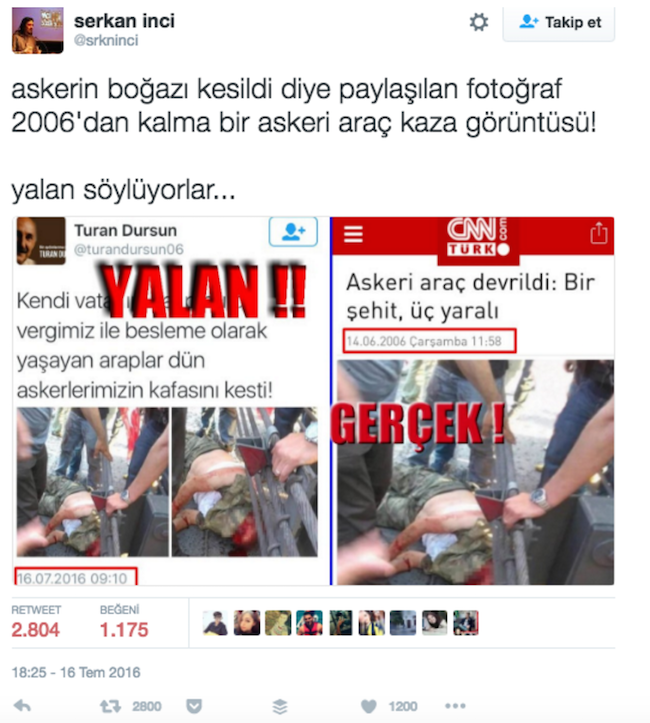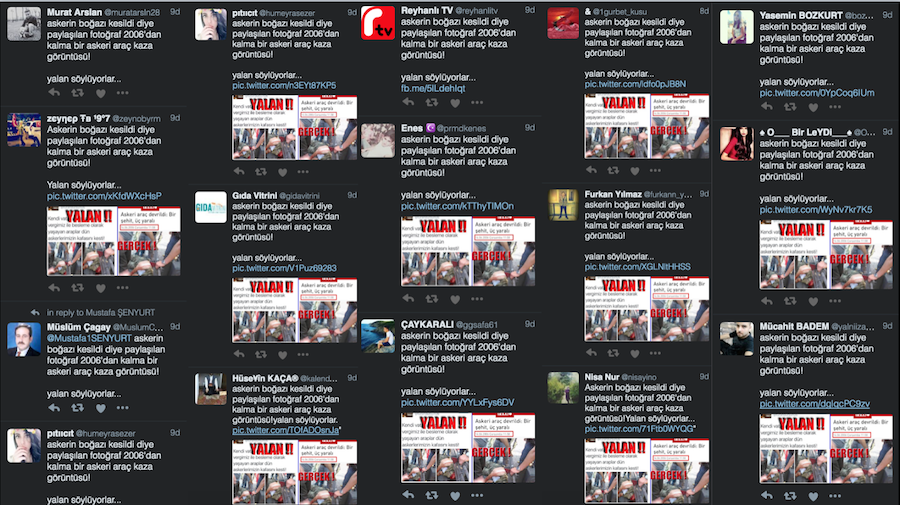It was around 10:15 pm in Turkey on July 15th when messages started to go around about “strange events taking place in Istanbul and Ankara”. A terrorist attack, some said. A coup attempt, said others. It quickly became clear that the latter were correct.
Within the hour, it had been confirmed by Prime Minister Binali Yildirim. Soon after, the state broadcaster was taken over and an anchor forced to read the coup leaders’ message of martial law. The official channels of news were shut down, and the world was left, in the most part, to trawl social media to find out what was going on.
Much has been written about how the coup was thwarted by FaceTime. The country’s President, Recep Tayyip Erdoğan, appeared on CNN Turk via Apple’s VOIP service, galvanising citizens to take to the streets and stop the military in truly remarkable acts of bravery. What is also remarkable is how the story of the night of the 15th of July was not recorded or reported by traditional news reporting – but by mobile phones.
In Turkey, people talked about the same during the Gezi Park protests of 2013 but the reality is that, then, eyewitness media accompanied television news. It was the same during other protests across Turkey. Yes, eyewitness media has been important – but it wasn’t the only true source for news gathering. July 15th was different.
Check out: 10 rumours you shouldn’t believe about the recent attacks in Turkey (March 2016)
Two problems emerge in this scenario. First, what is true? What is verified? At First Draft we’ve written much about the steps and importance of verifying eyewitness media. Nothing was different here and, indeed, Turkish journalist Mehmet Atakan Foça put together an excellent list of some of the false or misattributed pieces of eyewitness media flying around that evening. We see in Foça’s list the whole spectrum of misinformation, from fake Twitter accounts to misattributed video and misidentified victims.
The other problem to emerge was the issue of who is sharing what content on social media, and to what ends? What is the motivation around sharing? Thinking about this is a crucial part of the verification process, but it is probably the hardest of the verification steps to crack. As verifiers and journalists, we need to make sure we truly understand what the piece of content we have discovered is telling us, and explain that better to the audience.
Two pieces of eyewitness media in Foça’s list of fakes illustrate this issue perfectly, and both from the same story: the claim that protestors beheaded a soldier involved in the coup attempt in the early hours of July 16th.
One of the pieces highlighted by Foça is a close up of a soldier lying on the ground with a knife to his throat. But as Foça notes, this is a picture from Syria in 2013.

The text in the tweet, now deleted, translates roughly as “Is anyone hurt or smitten by this photo?”
But there are several other reasons we need to be careful with this image, and all are linked to the propaganda story the tweet is trying to spread: namely, that anti-coup protesters on the bridge were violent towards soldiers. Whether this is the case cannot be told from this picture alone, but what we can tell is how the Twitter account is trying to spread this story.
Let me expand on two of these indicators.
Disregarding the Twitter handle of @hsvhsjdjdbdjch1, itself a red flag, the name of the account implies a political leaning that is against Turkey’s ruling party. Translating the name – SAVCI BHARARA BAŞGAN – gives the result “Prosecutors Bharara BAŞG the”.
A search for the first two words gives us links to Prosecutor Preet Bharara – the US Attorney for the Southern District of New York – and a reverse image search of the account’s profile picture confirms that it is indeed a clearly photoshopped portrait of Bharara.
But why would a Turkish Twitter account be interested in this US attorney? A search for Preet Bharara and Turkey shows him to be something of a minor internet celebrity in Turkey, leading an investigation into an Iranian citizen believed to have close links to the ruling party in Turkey and accused of violating Iranian sanctions, money laundering, and defrauding the US government.
The other indicator is the hashtag. #NeDarbeNeDiktatörlük was trending in Turkey in the period after the military coup and its use sends a very clear political signal to the reader. Translating each capitalised word gives us “Neither Coup Nor Dictatorship”, a hashtag standing against the attempted coup, but also against the perceived autocratic tendencies of the government in Turkey.
Both signs show us that we should, as journalists, be careful about what the uploader is telling us, as they are clearly using the image to show an anti-government political position.
Foça’s excellent work in debunking misinformation around the coup provides us with another example – from the other side of the coin.
As rumours circulated of a soldier beheaded on Bosphorus Bridge, a claim spread on social media that a picture of the event was actually from a car accident in 2006.
In the tweet below, the account tells us: “The photograph that’s being shared of the soldier being decapitated is from a soldier who was killed in a car crash in 2006. They are lying…”

“LIE!!” reads the picture on the left, compared to “TRUE!” on the right. But the screenshot from a CNN Turk story in 2006 has been doctored to include an image. The original story has no image.
A search tells us that this 2006 incident did indeed happen but, as Foça notes, further searching turns up no similar pictures. Running the tests we used above also gives us precious little extra information to go on.
However, searching for the text in Tweetdeck returns very interesting results: dozens of tweets with the same image, text and syntax – some of which are shown below.
Several of these accounts openly support the ruling Justice and Development Party (AKP) of Turkey. As Tom Trewinnard of Meedan notes, such behaviour could also imply the use of bots to spread disinformation. Supporters of the AKP have been accused of such activities before.

A Tweetdeck search for the text in the first tweet returns multiple identical tweets
This indicates not a concerted campaign to rectify false information, rather a campaign to imply that the images of the soldier lying prostrate on the Bosphorus Bridge are false and should be disregarded as propaganda themselves. Not only is there an interest in some quarters to spread old or false footage to misinform, but also attempts to cover up true events.
With hindsight, and as far as it has been possible to ascertain, a soldier was beheaded by anti-coup protesters on Bosphorus Bridge on the morning of July 15th. This is now known despite the campaign to discredit footage from the event. The journalist’s verification process is all the more necessary in these circumstances to establish that a piece of eyewitness media is what it purports to be.
What does all this mean? First of all, while the failed coup of July 15th is a useful case study for highlighting some of the issues around how social media users repurpose and reshare eyewitness media (be it fake, misattributed or true) to push their own agenda, it’s not the only one. We’ve seen this around Daesh terrorist attacks in Europe, the UK referendum on staying in the European Union, Black Lives Matter campaigns in the United States. It is part of the social media landscape today – especially in highly politicised and controversial stories.
What it emphasises is the need to always strive to find the original piece of eyewitness media from the person who originally captured it. On the night of July 15th to 16th, in Istanbul and the capital Ankara, Turkish citizens were, for the most part, sharing eyewitness media showing how the Turkish people stood up to and ultimately thwarted a coup. This was the original content that journalists needed to be finding and using.
Failing that, the above examples emphasise just how much journalists using social media for newsgathering need to interrogate every piece of content – not just to do a simple reverse image search to check if the the eyewitness media is new or not.
It is also critical, particularly in moments of politicised conflict and strife, to hunt for indicators in the profile, in hashtags and other language used throughout an uploader’s account to evaluate who is sharing the content and why. Failure to do so leads us down a rabbit hole that risks spreading propaganda and myths that do not depict a balanced, considered story of events.
Sam Dubberley is co-founder of Eyewitness Media Hub, a member of the First Draft Coalition.
Follow First Draft on Twitter and Facebook for regular updates on social newsgathering, verification, journalistic ethics and hoaxes.


